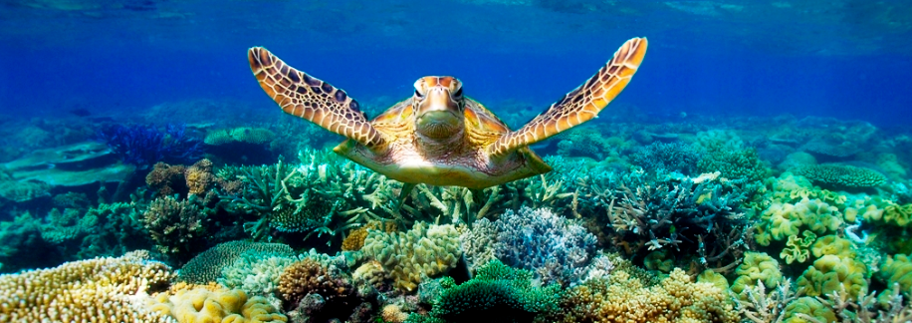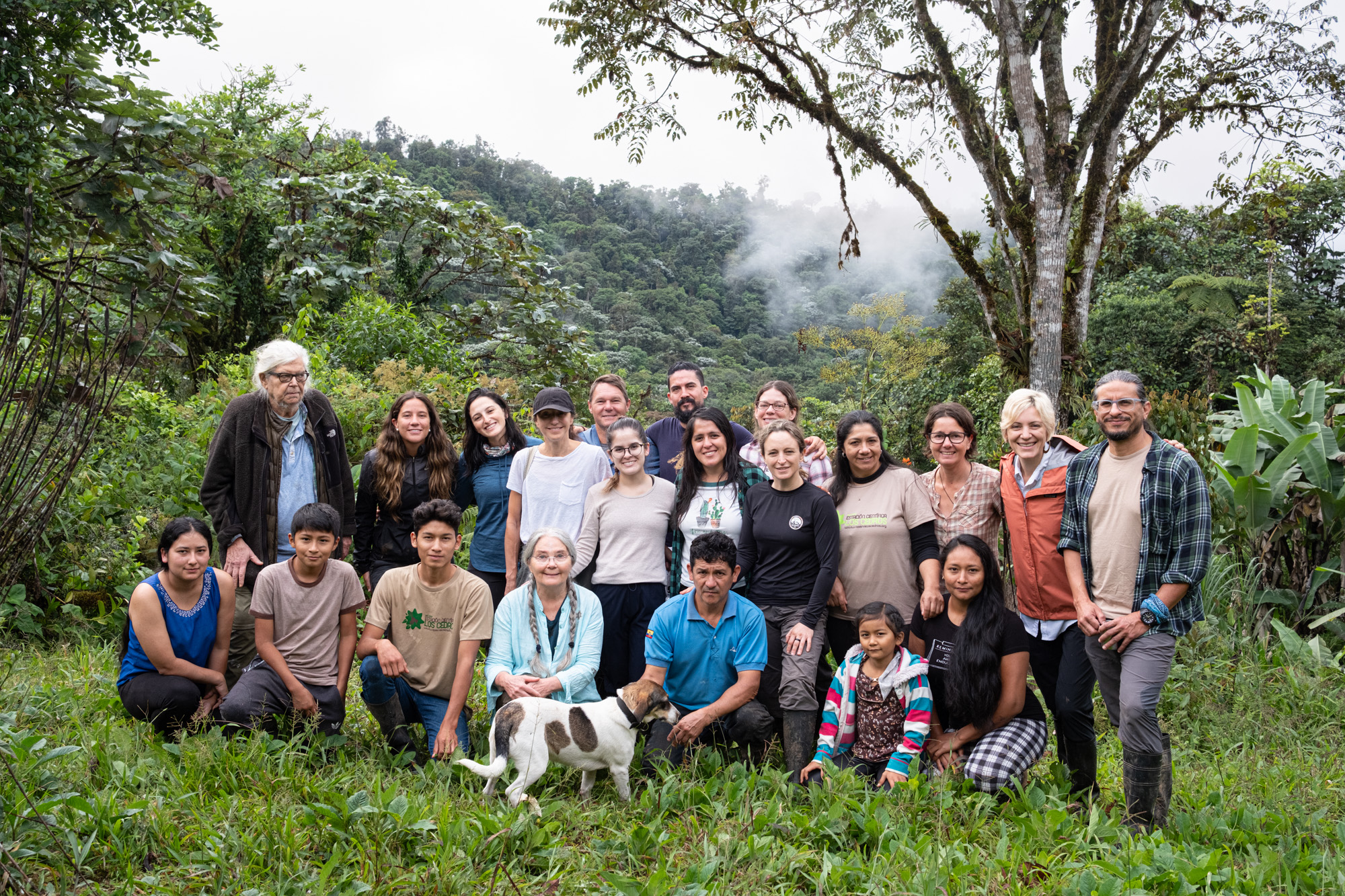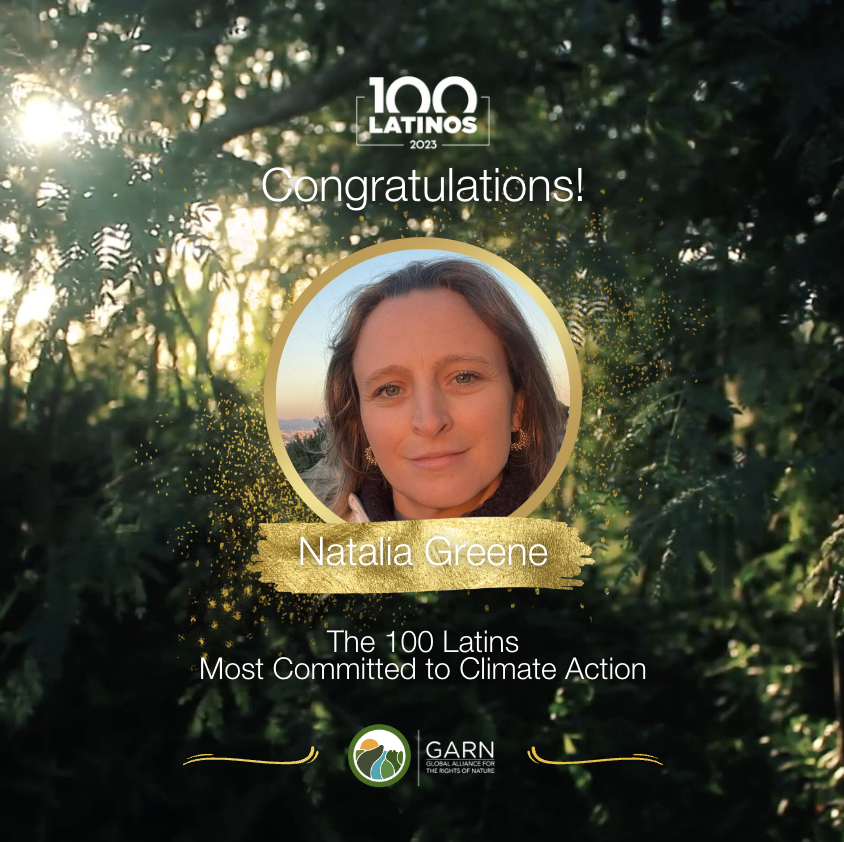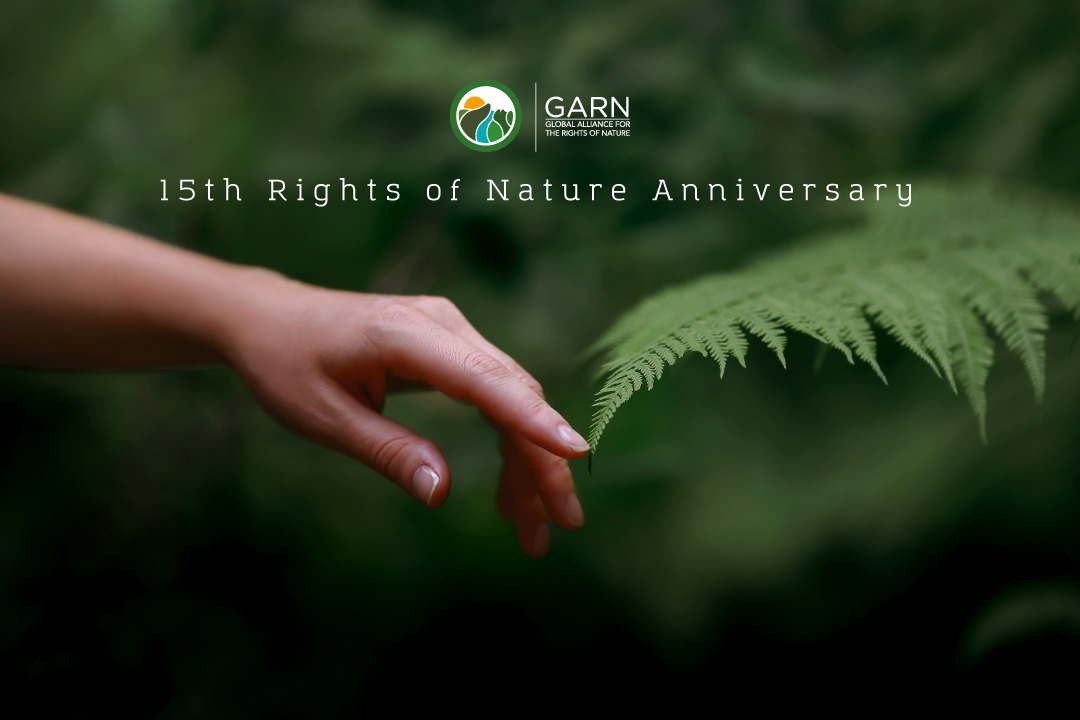International Rights of Nature Tribunal Lima, Peru ~ December 2014 Judge: Tantoo Cardinal
Case presentation: Great Barrier Reef Case The Australian Alliance Earth Laws Alliance submitted the application for the case of the Great Barrier Reef to the Tribunal in Quito in January 2014. In October 2014 a regional Tribunal in Australia presented updated information on the status of the reef. Evidence was presented at this hearing to prove significant damages to the Great Barrier Reef as a result of human activities. Cormac Cullinan, presiding Judge for the case in Quito, noted:
The Universal Declaration of the Rights of Mother Earth establishes a general duty of every human being as responsible for respecting and living in harmony with Mother Earth, and every human being and every public and private institution has a duty to act in accordance with the rights and obligations recognized in the Declaration. There are also specific duties mentioned in the Universal Declaration that are relevant to this case. For example, it states that States and public and private institutions must establish precautionary and restrictive measures to prevent human activities from causing species extinction, the destruction of ecosystems or the destruction of ecological cycles. In this case, it is clear that some of the institutions, like the federal and state governments were under a duty to prevent the destruction of the Great Barrier Reef. There is also a duty to ensure that the pursuit of human well-being contributes to the well-being of Mother Earth now and in the future. The evidence presented suggested that the exploitation of these coral reserves will not contribute to the present and future well-being of Mother Earth.
There was also specific evidence relating to the violation of the following rights: the right to be free from contamination, pollution and toxic or radioactive waste; the right to integral health, for example the health of the reef being affected, as well as the health of fish and other beings; and the right of every being to wellbeing. We also heard evidence of the destruction of the Reef ecosystem, which is potentially a violation of the right to continue the vital cycles and processes of the Reef, free from human disruptions.
The ocean covers 71 percent of the Earth’s surface and contains 97 percent of the planet’s water. Our global ocean is a single interconnected system. Because human adults are 65% water, humans are deeply connected with oceans and water systems. Humans are changing the fundamental chemical properties of the ocean due to the carbon dioxide concentrations in the atmosphere and destructive activities such as those around the Great Barrier Reef. The ocean is absorbing so much carbon that the PH level is being reduced. The ocean is 30% more acidic today that it was before humans began burning fossil fuels and more acidic than it has been in approximately 55 million years. Ocean life that need calcium – shells, coral reefs, plankton, whales and others – are being impacted. As more carbon dioxide is absorbed by our ocean, reefs are corroding, the shells are becoming thinner and, over time, sea life will ultimately not be able to create shell. Scientific predictions are that it could be within 50 years that coral reefs as a global ecosystem will go extinct because they cannot regenerate their calcium carbonate structures because of increasing temperatures.
The Australian Alliance Earth Laws Alliance submitted the application for the case of the Great Barrier Reef to the Tribunal in Quito in January 2014. In October 2014 a regional Tribunal in Australia presented updated information on the status of the reef. Evidence was presented at this hearing to prove significant damages to the Great Barrier Reef as a result of human activities. Cormac Cullinan, presiding Judge for the case in Quito, noted:
The Universal Declaration of the Rights of Mother Earth establishes a general duty of every human being as responsible for respecting and living in harmony with Mother Earth, and every human being and every public and private institution has a duty to act in accordance with the rights and obligations recognized in the Declaration. There are also specific duties mentioned in the Universal Declaration that are relevant to this case. For example, it states that States and public and private institutions must establish precautionary and restrictive measures to prevent human activities from causing species extinction, the destruction of ecosystems or the destruction of ecological cycles. In this case, it is clear that some of the institutions, like the federal and state governments were under a duty to prevent the destruction of the Great Barrier Reef. There is also a duty to ensure that the pursuit of human well-being contributes to the well-being of Mother Earth now and in the future. The evidence presented suggested that the exploitation of these coral reserves will not contribute to the present and future well-being of Mother Earth.
There was also specific evidence relating to the violation of the following rights: the right to be free from contamination, pollution and toxic or radioactive waste; the right to integral health, for example the health of the reef being affected, as well as the health of fish and other beings; and the right of every being to wellbeing. We also heard evidence of the destruction of the Reef ecosystem, which is potentially a violation of the right to continue the vital cycles and processes of the Reef, free from human disruptions.
The ocean covers 71 percent of the Earth’s surface and contains 97 percent of the planet’s water. Our global ocean is a single interconnected system. Because human adults are 65% water, humans are deeply connected with oceans and water systems. Humans are changing the fundamental chemical properties of the ocean due to the carbon dioxide concentrations in the atmosphere and destructive activities such as those around the Great Barrier Reef. The ocean is absorbing so much carbon that the PH level is being reduced. The ocean is 30% more acidic today that it was before humans began burning fossil fuels and more acidic than it has been in approximately 55 million years. Ocean life that need calcium – shells, coral reefs, plankton, whales and others – are being impacted. As more carbon dioxide is absorbed by our ocean, reefs are corroding, the shells are becoming thinner and, over time, sea life will ultimately not be able to create shell. Scientific predictions are that it could be within 50 years that coral reefs as a global ecosystem will go extinct because they cannot regenerate their calcium carbonate structures because of increasing temperatures. The Great Barrier Reef is the world’s largest reef. The reef extends for 2,300 km., includes 9,000 tropical islands covering an area of 344,400 km2. It is home to 1,625 species of fish, 600 types of coral, 133 species of sharks, 30 species of whales and dolphins, and 3,000 species of mollusks.
In 1981, UNESCO declared the reef one of only 19 World Heritage sites. In June 2011, UNESCO issued a warning to the Australian government about threats to the life of the Great Barrier Reef. Among the threats noted are impacts of 1.99 million tourists a year, damage caused by thousands of freight ships through the ports on the northern coast of Australia, by sediments agitated in the construction of new ports and by the extraction of coal in Australia (50.8 million coal per year). UNESCO made 14 recommendations to the Australian Government, which have not been addressed to date.
Damages documented include: marine pollution, death and displacement of fish, acidification of coral, impact to the livelihood and health of more than 50 indigenous communities living off the sea and in harmony with corals, whose members are suffering health problems. It has also been known to dolphins and turtles affected their health. Losses to the coral itself are estimated to be up to 48%. If destructive human activities continue, the reef will die along with the marine life it supports and the impact will affect indigenous peoples.
The Tribunal, after hearing the testimony and evidence analyzed, resolved to
The Great Barrier Reef is the world’s largest reef. The reef extends for 2,300 km., includes 9,000 tropical islands covering an area of 344,400 km2. It is home to 1,625 species of fish, 600 types of coral, 133 species of sharks, 30 species of whales and dolphins, and 3,000 species of mollusks.
In 1981, UNESCO declared the reef one of only 19 World Heritage sites. In June 2011, UNESCO issued a warning to the Australian government about threats to the life of the Great Barrier Reef. Among the threats noted are impacts of 1.99 million tourists a year, damage caused by thousands of freight ships through the ports on the northern coast of Australia, by sediments agitated in the construction of new ports and by the extraction of coal in Australia (50.8 million coal per year). UNESCO made 14 recommendations to the Australian Government, which have not been addressed to date.
Damages documented include: marine pollution, death and displacement of fish, acidification of coral, impact to the livelihood and health of more than 50 indigenous communities living off the sea and in harmony with corals, whose members are suffering health problems. It has also been known to dolphins and turtles affected their health. Losses to the coral itself are estimated to be up to 48%. If destructive human activities continue, the reef will die along with the marine life it supports and the impact will affect indigenous peoples.
The Tribunal, after hearing the testimony and evidence analyzed, resolved to
- demand authorities of Australia, both the Queensland government and the federal government to effectively control human activities in the area, in particular:
- condemn the government of Australia for violations of the rights of the reef to maintain its vital cycles and ability to fulfill its natural potential,
- reduce land based marine pollution from agriculture, industrial waste, urban development, etc.
- tourism must be sensitive to the protection and health of the reef,
- refrain from building more and expanding existing ports,
- prohibit the passage of shipping through sensitive areas of the reef and
- commit to the complete restoration of the reef, and
- petition the government of Australia to comply fully with the recommendations made by UNESCO.




